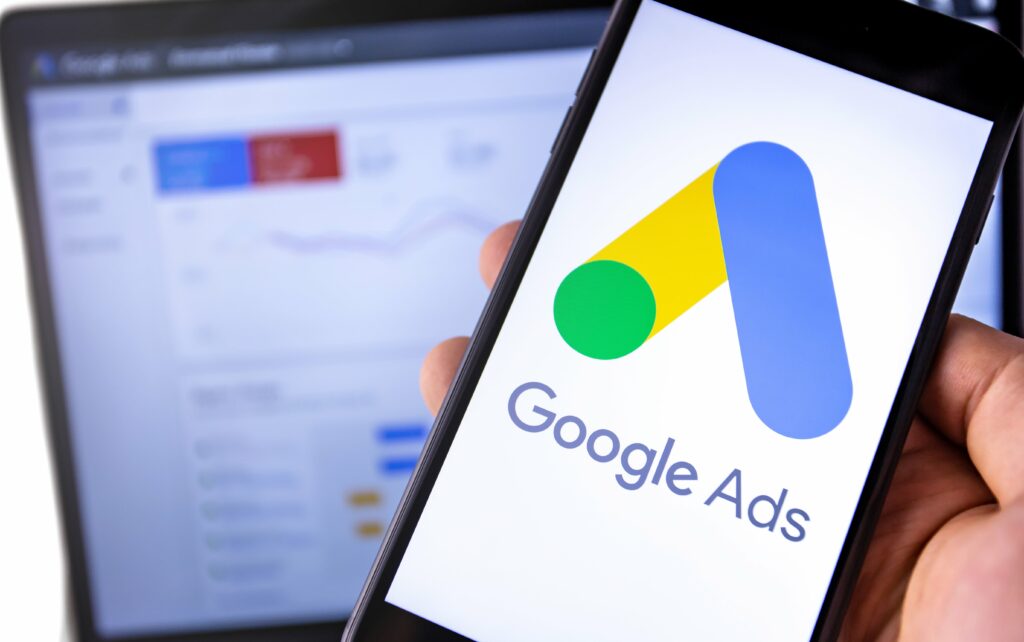In this beginner’s guide, we’ll take you on a journey of PPC adventure, exploring the basics and providing tips on how to become a pro at this exciting and powerful advertising tool.
What is PPC Advertising?
Think of PPC advertising like a game of darts. You pick your target, aim and shoot (place your ads) and if someone likes what they see, they click on it (like a bullseye!).
PPC advertising, or Pay-Per-Click, are the ads you see on websites, in your gmail, on your discovery page (we,re looking at you, android users!) and, of course, in your search results You only pay when someone clicks on your ad and voila! your ad gets in front of the right audience. Simple right?
Pay-Per-Click It is a cost effective way to reach your target audience if you have a well organized, responsive website.
Because ad platforms constantly come out with new updates and algorithm changes, PPC can be intimidating. Don’t let it fool you! Read on to see the best way to understand and harness its power
How does PPC work?
Are you ready to take your advertising game to the next level? Well, buckle up and get ready to learn the ins and outs of Pay-Per-Click (PPC) advertising. Think of it like a treasure hunt, where every click leads to a treasure (your website) and you get to control the treasure map (your budget). In this section, we’ll guide you on how to make the most of your PPC campaigns and hit the jackpot of online advertising!
1. It’s budget-conscious
With PPC advertising, you’re in control of your budget. Set a daily or monthly budget and only pay when someone clicks on your ad, no hidden fees or surprise bills.
Based on your budget, Google will ration the amount of times it shows your ads each day to make sure your coverage is spread out over the month. Remember that you can always change your budget whenever you feel like it! The average spend is somewhere in between $500-1000 per month. If you want more insights on what return to expect from your budget, check out Wordstream’s resource on Google ads benchmarks by industry.
2. You can monitor ad performance
Traditional advertising in newspapers and billboards often leaves us wondering how well it worked. PPC platforms like Google ads and Meta (Facebook and Instagram) ads provide detailed analytics to track your ad performance; this way, you can see which ads are hitting the mark and which ones need improvement.
Some of the key metrics you should keep an eye on include:
- Click-through rate (CTR): This metric measures the number of clicks your ad receives divided by the number of times it is shown (impressions). A higher CTR generally means that your ad is relevant and appealing to your target audience.
- Conversion rate: This metric measures the number of conversions (sales, leads, sign-ups, etc.) divided by the number of clicks. A higher conversion rate means that your ads are effectively driving desired actions from your target audience.
- Cost per click (CPC): This metric measures the cost of each click on your ad. Lower CPCs are generally better as they indicate that your ad is more cost-effective.
- Return on investment (ROI): This metric measures the return on your advertising investment. It can be calculated by dividing the revenue generated by the cost of the advertising campaign. A higher ROI is generally better as it indicates that your advertising is more profitable.
PPC gives you the opportunity to monitor your ad performance and make tweaks to your ads and campaigns to make sure you are conveying your message to your potential customers. This will allow you to make data-driven decisions to optimize your PPC campaigns for maximum results.
3. PPC is flexible
The best part about digital media is that it’s living and breathing. You can monitor your ad performance and adjust your campaigns for optimal results. Just like a website, you can always make tweaks to copy, imagery, and campaigns without the hassle (and the cost) of reprinting or ordering materials. It’s also environmentally friendly – yay, trees!
4. Reach the right people
Business owners can have some peace of mind by targeting their audience based on specific demographics, locations and interests. It means that you don’t waste ad spend on people who are unlikely to convert, giving you more bang for your buck and increasing ROI.5. Build brand awareness
While you only have to pay for the actual clicks on your ads, don’t discredit the opportunity to get your name out there. PPC helps you establish trust with your target market by placing your brand in front of a large audience. Our ads will work to drive traffic to your website, and your impressions (or people who see your ad) carry value to build exposure and brand recognition.
6. PPC is for all sizes
Say goodbye to size limitations, PPC advertising is a tool that can be used by businesses of all sizes to grow their online presence and drive more traffic to their website. Small businesses, multinational companies, and anything in-between can use PPC advertising to reach their consumers. What’s great is that it is a customizable and cost-effective advertising medium. You can opt for a campaign that best suits your budget!
Is PPC right for you?

Want to join the PPC advertising party but not sure if it’s the right fit for your business? Before diving into PPC campaigns, consider your target audience, website and objectives to ensure PPC is the best way to achieve your business goals.
1. Is your audience online?
Worried about whether your audience is online? Fear not! PPC advertising works for both B2B and B2C businesses, whether it’s connecting with potential clients or driving sales. Plus, even in B2B, most folks are secretly browsing online before making a purchase, PPC helps you catch them in the act. PPC allows you to get in front of those potential customers at the right time and the right place.
2. Is your website set-up to handle ad campaigns?
Before starting with PPC, make sure your website is optimized for conversions and provides a good user experience; you don’t want to scare away your potential customers. Ask yourself these questions to see if your website meets the basic criteria for PPC success:
- Does each one of your products or services have its own page?
- Does each product or service page direct people to obtain more information or to complete a sale?
- Does your website have content relevant to your products or services?
- Is your website user-friendly and responsive? (ie. can it be viewed easily on a mobile device)
A website that is set up for ad campaigns is like having a good pair of running shoes, it ensures that you can keep up with the pace and go the distance with your PPC advertising efforts.
3. What are your marketing objectives?
What are your marketing objectives? It’s important to consider whether PPC advertising aligns with them before investing in PPC. Identify if your business goals include:
- Lead generation
- Increasing sales
- Building brand awareness
By identifying and prioritizing your marketing objectives, you can ensure that your PPC campaigns are tailored to achieve the desired results.
Conclusion
In conclusion, PPC advertising is like a secret weapon in your marketing arsenal, it helps you reach the right people at the right time, optimize your campaigns for maximum results, and achieve your business goals with precision. It’s a cost-effective and flexible way to promote your products or services online. Now that you know the basics, it’s time to put your PPC skills to the test and take your online presence to the next level!
And if you ever need any help, don’t hesitate to reach out to KEEN for support and guidance. We’re here to help you unlock your full PPC potential.

